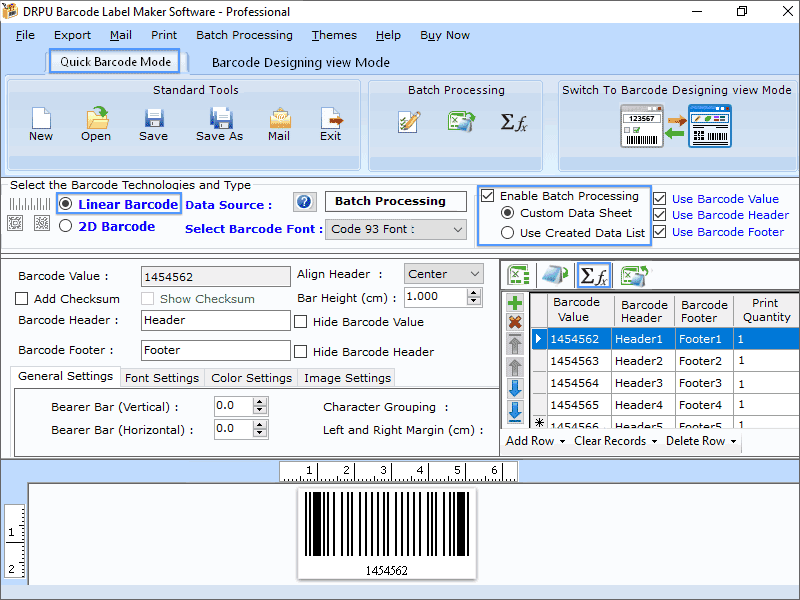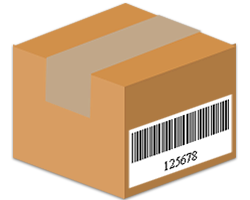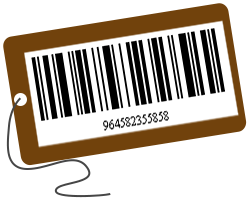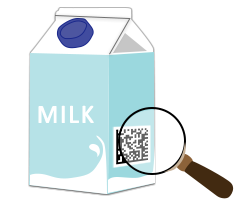
Different Barcode Types: why?
Many different types of barcodes are used to support different types of business processes and they evolve to solve new and different problems. They are often used to store additional information like serial numbers, batches, and other types of business information. All barcode types do the same thing: they hold and remember product details. Barcodes are portable-they travel on paper, cardboard, wood, and just about any surface.
Barcode types differ in qualities such as capacity and linearity, making each one of them profitable or suitable for a particular industry or usage. While there are many barcode symbologies, choosing the right one depends on the needs of the business, the size of the product label, and the amount of information that needs to be encoded.
What are the Most Common Barcode Types?
1. code 39
This is one of UPC's oldest and first evolution barcodes. Because UPC only encodes single digits, 0 to 9, there is a need to encode alphabetical characters, so UPC created Code 39 in 1995. It encodes 42 different character types, like 26 uppercase alphabetical, 10 numerical, and 6 special characters. Code 39 provides an alphanumeric encoding solution, but it has limitations. Uppercase letters were only one, and every encoded character took up a lot of space. Code 39 barcodes are primarily used for various labeling needs, such as electronics, healthcare, government, and industrial applications.
2. Code 128
Code 128 was invented in 1981 to solve the issue of encoding both alphabetical characters and numbers without sacrificing barcode density. It also solves the encoding character space problem of code 39. Code 128 can encode two characters in the space of one character with all 128 ASCII characters. That is widely used in shipping and packaging applications worldwide. These smaller, high-capacity barcodes solved a lot of barcode problems but were sensitive to slight printing inaccuracies. Still, there was a need for a barcode that could withstand the challenges of printing on the wavy surface of corrugated cardboard.
3. Interleaved 2 of 5
Interleaved 2 of 5, also known as the ITF barcode, it encodes pairs of characters and is perfect for corrugated shipping cartons, so it is efficient. ITF is ideal for identifying shipped or packaged containers and items, but it accommodates large inaccuracies in bar and space widths. ITF-14 is commonly used for warehouses, distribution, and manufacturing industries.
- Numerical Only
- There is no Check Digit.
- High Printing Tolerance.
4. QR code
This has become one of the most common 2D barcode types. While manufacturing was realizing that barcodes could be useful in their supply chain, the problem was that many of their parts and subassemblies were so small that there was no space for a 2 or 3 long UPC, Code 39, or Code 128. Many of the parts were not flat. To solve these problems, use the QR barcode.
- It has a data capacity of over 7,000 numeric or nearly 4,300 alphanumeric characters.
- Small footprint for space-limited.
- High tolerance for print inaccuracy.
- Fast scanning (QR means "quick response").
5. Data Matrix Code
Although QR Code is flexible, there were still problems because it was limited to a range of sizes and required high differentiation between the symbol and its background. There was a need to mark very small items and to mark directly on metal or plastic without a label. The Data Matrix barcode solves these problems. The Data Matrix is even more scalable than QR codes and offers the same fast readability, high data density, and fast scanning.
- Numeric (3,116)
- Alphanumeric Characters (2,335)
- Binary (1,556)
Ways to Use Barcodes

Barcodes can resolve Tracking inventory issues, like products sold, raw materials, & supplies, so you can stay on top of what’s been removed from stock and when you need to reorder items. Whether it’s being sent, received, or even marked as damaged, barcode also lets you quickly update quantities, so inventory no. are never out of date.

Many organizations put barcodes on invoices to make them easier to scan. Track invoices so that when payments are made, you can quickly identify which customer has paid. A warehouse worker could print the invoice for an order, then scan the barcode to figure out which items to pick and where they’re located, reducing the chance for mistakes.

Mail Barcode is a system designed by the United States Postal Service that includes a unique 65-bar postal barcode that is assigned to individual mailers. Many industries can use barcodes to track all the mail and packages they send out. The barcode gets printed in designated address areas of specifically sized and designed postcards, letters, and flats.
How to Generate Standard Barcodes for Business
There are several options for barcode designing software, but not every piece of software will be a perfect fit for your company. You can generate your barcodes using Barcode Maker Software for different business processes.

You can choose different label templates and designs from the software. They also offer database solutions, like custom data sheets or Excel files to create bulk number of barcodes. Printing is simplified, and they assist in ensuring that the final product looks exactly as you intended.




